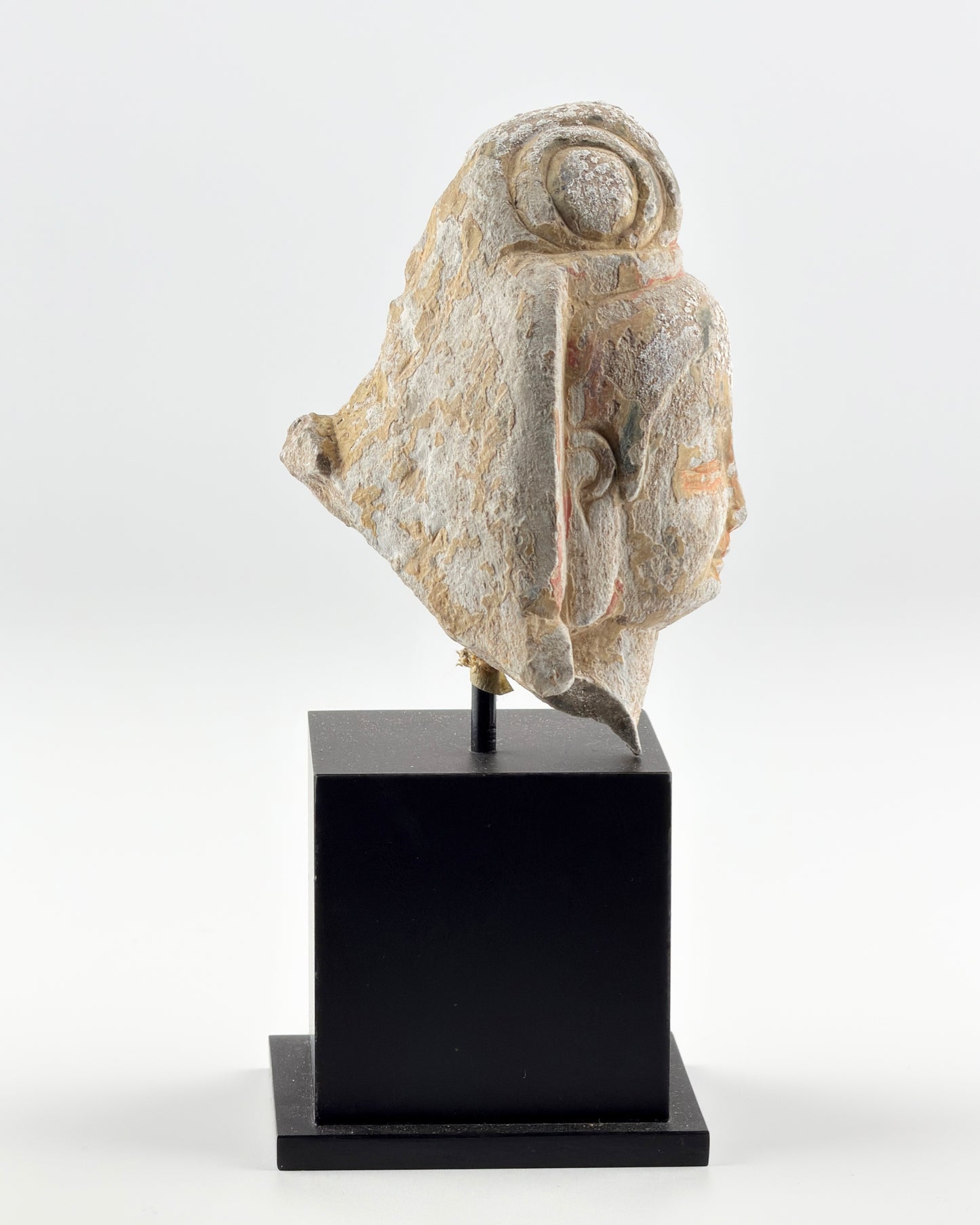Stone Head of Bodhisattva, Northern Wei-Tang Dynasties
Stone Head of Bodhisattva, Northern Wei-Tang Dynasties
Couldn't load pickup availability
With downcast eyes and a faint, serene smile, this sculpted head conveys a quiet sense of inner calm. The softly modeled face is framed by a surrounding headdress and crowned with a high topknot, lending the figure a composed and dignified presence. Subtle traces of original pigment remain on the surface, suggesting its original polychromy. The black display stand was made in Hong Kong at the time of acquisition.
Date : Northern Wei-Tang Dynasty(5-8th century)
Dimension : 10.5cm (Height) x 7cm(Diameter)
Condition : Good
Provenance : Acquired in late 1990s from Hongkong
Reference :
1) Sotheby's London 13 May 2015 - The Soul Of Japanese Aesthetics – The Tsuneichi Inoue Collection - Lot 18
(Price realised : 17,500 GBP / Type : Closely related)
https://www.sothebys.com/en/auctions/ecatalogue/2015/tsuneichi-inoue-collection-l15319/lot.18.html
2) Sotheby's New York 26 September 2023 - CHINA / 5000 YEARS - Lot 1156
(Price realised : 8,890 USD / Type : Closely related)
https://www.sothebys.com/en/buy/auction/2023/china-5000-years-4/a-stone-head-of-a-bodhisattva-sui-dynasty-sui-shi
* Stone Head of Bodhisattva (Northern Wei-Tang dynasty)
The Stone Head of a Bodhisattva from the Northern Wei to Tang Dynasty is a notable example of Buddhist art produced during this transformative period in Chinese history. This era, spanning from the late 4th to the early 10th century, was characterized by significant religious and artistic developments.
During the Northern Wei Dynasty (386–534 AD), Buddhism became a major influence in Chinese culture, prompting the creation of numerous Buddhist statues and sculptures. The art from this period is noted for its stylized, elongated figures and serene facial expressions, influenced by the Gandhara style of Buddhist art from present-day Pakistan and Afghanistan. This style reflects a deep spiritual idealism, aiming to represent the enlightened state of the Bodhisattvas.
As the period transitioned into the Tang Dynasty (618–907 AD), the art took on more Chinese characteristics, moving away from the Indian-influenced Gandharan style. Tang Dynasty Buddhist sculptures are renowned for their robust, lifelike qualities and rich detailing. The facial features became fuller and more realistic, and the garments and poses reflected greater naturalism and fluidity.
A typical stone head of a Bodhisattva from this era would likely showcase a serene expression with half-closed eyes symbolizing meditation and spiritual introspection. The head might also feature a ushnisha, a protuberance on the top symbolizing supreme wisdom, and might be adorned with detailed carvings of jewelry and elaborate hairstyles, reflecting the high status of Bodhisattvas in Buddhist theology.
Such artifacts are not only valuable for their beauty and craftsmanship but also provide insight into the religious and cultural shifts within China during these centuries. These sculptures are considered spiritual representations designed to aid in meditation and devotion, serving as a bridge between the human and the divine.










